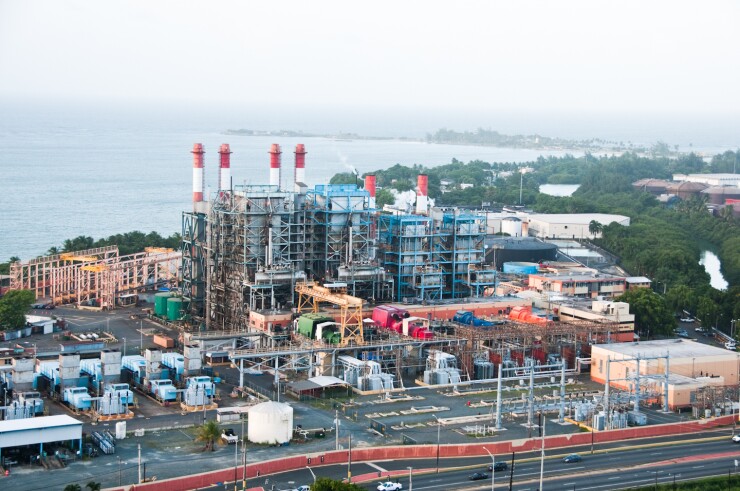Puerto Rico's infrastructure received a D-minus grade from the local section of the American Society of Civil Engineers, which found the territory needs $1.3 billion to $2.3 billion of investment beyond the current level to support growth and competitiveness.
The island's investment need is even greater if deferred maintenance and hurricane-related projects are included, according to the report released Tuesday. Héctor Colón De La Cruz, president of the Puerto Rico section of ASCE, said the group didn’t have enough information from the government to estimate the amount needed for maintenance and hurricane-related projects.

The engineering group assigned a D-minus to Puerto Rico's bridges, a D-minus to dams, a D to drinking water systems, an F to energy systems, a D to ports, a D-minus to roads, D-minus to solid waste systems, and a D-minus to wastewater systems.
“Frankly, given the lack of access to the capital markets, political turmoil and inefficient operations, the grade could have been even worse," said Howard Cure, director of municipal bond research at Evercore Wealth Management. "What is the most troubling is the F grade for energy. As the report noted, the energy grid is fragile, blackouts are frequent and prices have continued to increase. While all of the infrastructure categories are important, Puerto Rico really needs to contend with its energy needs if it hopes to attract business to the island and expand the economy.”
Regarding energy infrastructure, the section said federal support is “imperative,” and that “any grid investment needs to be accompanied by policy, guidance, and regulations that yield grid resilience consistent with consensus industry standards.”
Regarding the road system, Puerto Rico allows much heavier trucks on its roadways than in much of the mainland U.S., the section said. Federal funding and “a more strategic approach to maintenance is necessary in the near term.”
Regarding solid waste systems, in 2018 the U.S. Environmental Protection Agency said that there is less than five years of capacity left at island landfills. There is inadequate recycling on the island and existing and closed landfills are poorly run and monitored. This can contribute to the spread of Zika, chikungunya, and other diseases.
Colón De La Cruz said that his section hadn’t approached the governor or the Oversight Board charged with restoring fiscal discipline on the island with its recommendations, but that it was willing to talk with them.
He said if Puerto Rico improved its infrastructure it would improve its economic performance.
The report the section outlined seven steps the island could take to improve its infrastructure grade:
- Increase the resiliency of Puerto Rico’s infrastructure;
- Establish a Puerto Rico Infrastructure Plan with a wide variety of stakeholders and experts in the field;
- Develop comprehensive and consistent maintenance programs for Puerto Rico infrastructure systems;
- Improve and increase the technical expertise at agencies that own and operate infrastructure so that they can complete regulatory requirements;
- Increase drinking water infrastructure’s capacity and delivery;
- Take immediate action and provide significant funding to solid waste infrastructure; and
- Develop and implement a plan for the central government and municipalities to rehabilitate, reconstruct, and maintain roads to the highest standards.
These were in addition to specific recommendations that the section made for each infrastructure class.





